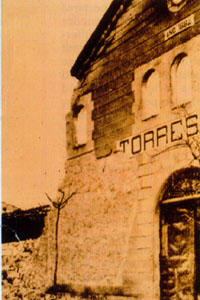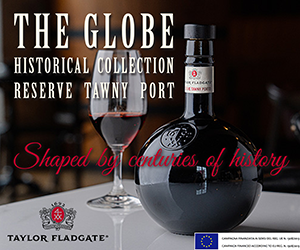The plan for today's column was to review more wines to buy with January's budget constraints in mind, but some samples bought at under the $10 ceiling turned out to be particularly disappointing.

Judging by the news of oversupply coming out of
In this part of the world we haven't seen -- nor are we likely to -- anything resembling the Charles Shaw wine phenomenon that Californians have been enjoying. But the supposedly mysterious label selling at the Los Angeles-based Trader Joe's grocery chain is a good example of where prices may be headed.
"Two Buck Chuck" (as it was known in wine circles) sold moderately for months at $2 a bottle, then began to develop cult status in the autumn after a wine-trade magazine's tasting panel rated the Charles Shaw Chardonnay better than a $67 bottle that the magazine didn't identify.
Soon after, the Los Angeles Times reported that SUVs and mini-vans were backing up to Trader Joe's scores of stores and loading up the chardonnay by the case.
In fact the Shaw label is owned by the Bronco company, a
Add in a few more cents to cover the cost of the glass bottle and cork, and -- voila! -- an industrial-style producer can make a decent profit on a $2 bottle sold in large volumes. Well, at least it can within
If that price scenario is still far-removed from the over-regulated B.C. wine market, worldwide over-production of wine grapes is not. It follows that we should be able to find bargains in all price ranges for years to come.
Now, back to today's budget-pleasing picks.
A couple of years ago I raved about a viognier from Chilean producer Cono Sur, and a local restaurant chain jumped in and bought up all the stock, effectively removing it from liquor stores.
The subsequent vintage was fair to poor, and not really worth buying. But the 2002 Cono Sur Viognier, made with a blend of Colchagua and
This viognier has an enticing honey/peach nose with floral mineral notes. On the palate it remains dry, with mineral citrus flavours and quite a fresh orange marmalade finish. It's delicious, well made and attractively priced.
Different but just as good is the KWV Chardonnay 2002, from
Unfortunately the first bottle I tasted was unpleasant, and the second sample wasn't much better, showing a thin, acidic character one normally does not associate with well-made
A far better wine from the
The Torres Sangre de Toro 2000 from neighbouring
Another disappointing red was the Diego Murillo Malbec 1999 from Alto Valle del Río Negro,
INEXPENSIVE CHOICES, PART TWO
Wine: Cono Sur Viognier 2002, Colchagua/Casablanca,
Price: $11.99
UPC: 7804320405407
Score: 15/20
Comments: Peachy, floral, mineral notes.
Wine: KWV Chardonnay 2002,
Price: $10.99
UPC: 748294044118
Score: 15/20
Comments: Amazing style for the price.
Wine: Charamba (Quinta da Aveleda) 1999 Tinto,
Price: $9.99
UPC: 5601096611306
Score: 11/20
Comments: Thin and acidic.
Wine: Dom Freitas 2000, Palmela,
Price: $15.45
UPC: 5608527000104
Score: 15/20
Comments: A tasty New Wave Portuguese red.
Wine: Torres Sangre de Toro 2000,
Price: $9.95
UPC: 8410113003027
Score: 12/20
Comments: Not up to typical Torres standards.
Wine: Diego Murillo Malbec 1999, Alto Valle
Price: $13.50
UPC: 604984111228
Score: 11/20
Comments: Disappointing.

 quicksearch
quicksearch





